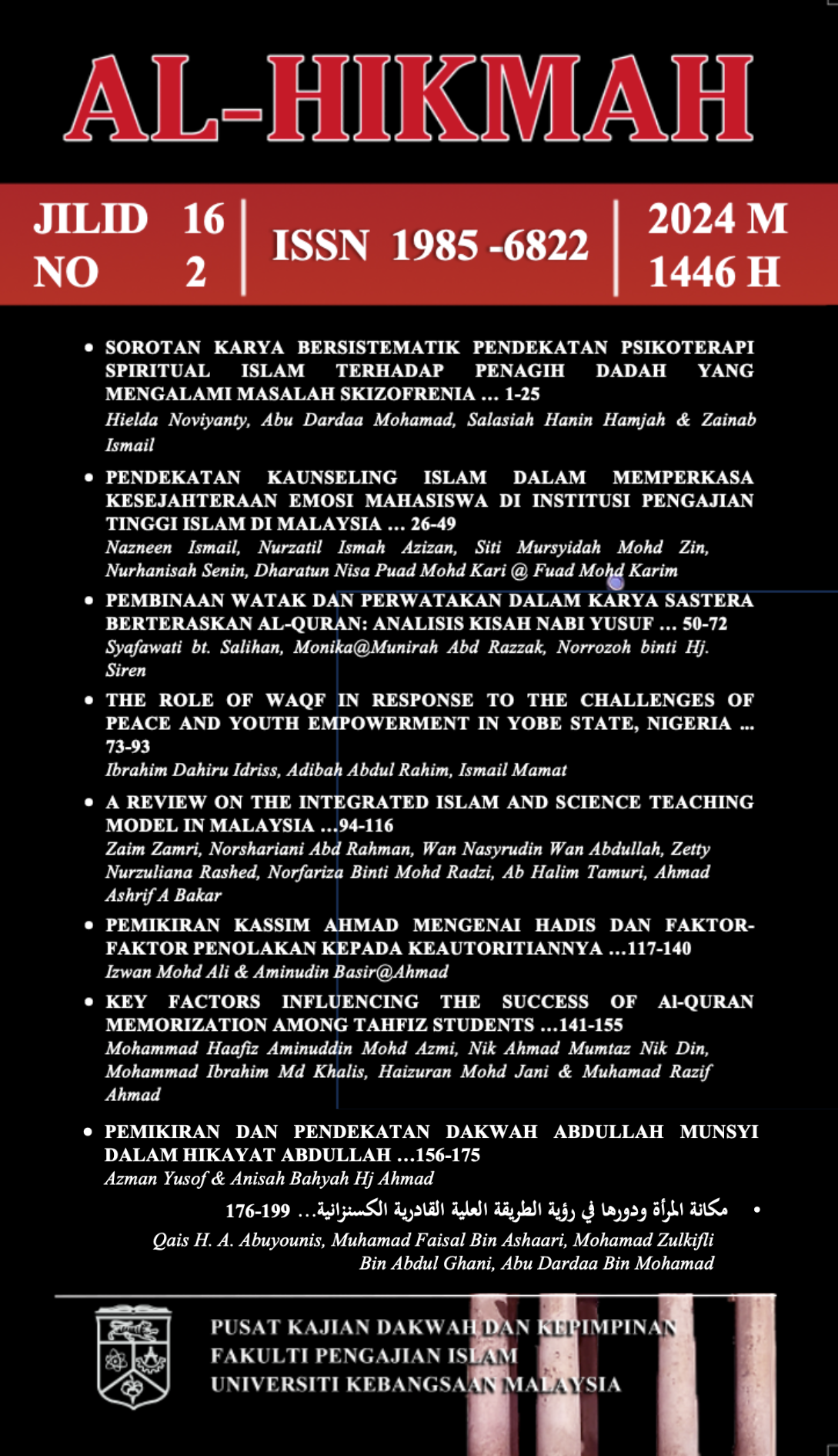Pemikiran dan Pendekatan Dakwah Abdullah Munsyi dalam Hikayat Abdullah
Abdullah Munsyi's Da'wah Thoughts and Approach in Hikayat Abdullah
Abstract
Abdullah bin Abdul Kadir or better known as Abdullah Munsyi was a writer who lived at the beginning of the 19th century. He is known as the father of modern Malay literature because his works are not tied to classical Malay literature. One of his works which is listed as a Masterpiece of the Malay World is Hikayat Abdullah. Although much research has been conducted on his work, there is still no research regarding aspects of his thought and preaching approach. Therefore, this research aims to examine Abdullah Munsyi's thoughts and approach to preaching based on the text Hikayat Abdullah. This research uses a qualitative method that examines the text Hikayat Abdullah published by Pustaka Antara, Kuala Lumpur, 1963 (Reprint 1997), using textual analysis methods. Apart from that, secondary sources such as journals and books are also used to support and strengthen research findings. As a result, this research found: 1) From the perspective of da'wah thinking, Abdullah Munsyi has conceptions and ideas that are applied through a da'wah approach in (a) work and (b) friendship activities. 2) Bill Kitabah's preaching approach in conveying three core thoughts, namely (a) the importance of education, (b) rational thinking, and (c) criticism of customs that conflict with religious values. It is hoped that this study can be the initiator of further studies to explore, read and understand Abdullah Munsyi's thought and approach to preaching and take advantage of it.
Copyright (c) 2024 Al-Hikmah

This work is licensed under a Creative Commons Attribution-ShareAlike 4.0 International License.
Authors retain copyright and grant the journal right of first publication with the work simultaneously licensed under a Creative Commons Attribution License (CC BY-SA 4.0) that allows others to share the work with an acknowledgement of the work's authorship and initial publication in this journal.





